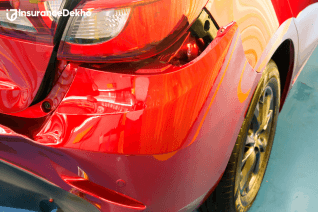Everything About the Pollution Under Control Certificate
Everything About the Pollution Under Control Certificate
PUC Certificate or Pollution under Control Certificate
There are certain documents that are required to be carried while driving a car in India. Documents such as a driving license, car insurance policy, and pollution control certificate are required. The majority of car owners believe having a license is sufficient and often neglect the importance of the other two documents.
As per the Indian Motor Tariff, a Motor Insurance cover is mandatory, while, according to the Central Motor Vehicles Rules, 1989, a Pollution Under Control (PUC) Certificate is mandatory to operate any motor vehicle. Listed below are the details related to the PUC certificate.
What is a PUC Certificate For Vehicle?
The PUC is an abbreviation for Pollution Under Control. This certificate is issued for a car after it has passed the PUC test. The issuance of this certificate for a car implies that emission from the car is in compliance with the pollution control standards and it does not harm the air quality of the environment.
All the cars release smoke if remains unchecked for long, which can have a bad impact on the environment. Therefore, with the PUC certification, the emission levels of cars are checked in conformity with the environmental norms to ensure the car holds no threat of air pollution.
The PUC certificate contains the following details:
- The serial number of the certificate
- The license plate number of the car
- The date of the PUC test
- The expiry date of the PUC certificate
- Readings of the PUC test
The Central Motor Vehicles Rules stipulate that this certification is mandatory. The driver may therefore be fined Rs. 10,000 if he is caught not holding it. To get this certificate, it is important to know the parameters. Here is a list of the criteria that every car should meet in order to qualify for this certification:
|
Type of Vehicle |
Percentage of CO |
Hydrocarbon measured in PPM |
|
2 and 3 wheelers (2/4 - stroke) manufactured on or before 31st March 2000 |
4.5 |
9,000 |
|
2 and 3 wheelers (2 - stroke) manufactured after 31st March 2000 |
3.5 |
6,000 |
|
2 and 3 wheelers (4 - stroke) manufactured after 31st March 2000 |
3.5 |
4,500 |
|
4 wheelers manufactured according to Pre Bharat Stage II Norms |
3 |
1,500 |
|
4 wheelers manufactured according to Pre Bharat Stage II, Stage III or subsequent Norms |
0.5 |
750 |
(Source - Automotive Research Association of India (ARAI))
What is Pollution Certificate Validity & Cost?
The PUC Certification for a new car or bike is valid for one year, after which a new PUC certificate must be obtained from a PUC testing center. It is usually necessary to renew the PUC certificate at regular intervals, and the certificate holds a validity period of six months. The validity can vary if the reading of the PUC test is not satisfactory. The cost to get the PUC certificate ranges from Rs. 60 to Rs. 100. which varies from car to car and on the basis of their fuel type.
Where Can The PUC Test be Conducted?
The PUC test can be conducted at the following places:
- Petrol pumps authorised to conduct this test
- Licensed auto emission centre equipped with a computerised facility
- Independent testing centres.
What Are the Benefits of Holding a Pollution Under Control Certificate (PUC)?
To own a certificate or any document compulsorily is considered a tedious task by several car riders as driving without it could land them into legal trouble. On this note, it is important for all car owners to understand the significance of Pollution under Control Certificate (PUC), so they carry it as their responsibility and not as a burden. Below are some benefits of carrying a PUC certificate:
- You Can Contribute in Keeping the Environment Clean - Air pollution can badly impact the environment, therefore, by ensuring that your vehicle emissions are within the legal levels you will be helping the environment in keeping it clean.
- You Can Be Aware of Your Vehicle’s Condition - When you renew your Pollution under Control Certificate in every 6 months without any break, you can easily get to know about the pollution levels of your vehicle. It also tells you if your car needs servicing due to which you can get it checked before it turns into a bigger issue.
- You Can Be Aware of Your Vehicle’s Condition – To hold a PUC Certificate while driving your car is compulsory as per the Government of India through the Motor Vehicle Act of 1988, hence, driving your car without PUC certificate can make you face possible penalties.
- You Can Renew Your Insurance Policy Easily – When it comes to the renewal of a car insurance policy, a valid PUC Certificate is one of the mandatory documents which you must require. Therefore, keeping the PUC certificate and renewing it timely will help you renew your insurance cover without any hassle.
Also Read
IRDAI Withdraws Sale of Comprehensive Motor Insurance Policy
Difference Between Comprehensive and Zero Depreciation Bike Insurance Policy
Conclusion PUC Certificate
The PUC certificate is also mandatory for drivers in India, just like the license and insurance policy. Under the Central Motor Vehicles Rules, 1989, failure to obtain this certificate can result in a fine. So, it is highly suggested that the car undergoes the pollution under control test and is renewed before it expires in order to obtain this certification. You can save yourself from penalties and the environment from pollution by obtaining this certification today.
Lastly, if you already have your PuC Certificate you can acquire it online for your bike or car through Parivahan, the website launched by the central government. Go to the website and in the section enter your vehicle’s registration number, the last five digits of their chassis number. Next, enter the security code that is visible on the screen and select ‘PUC details’. The page that loads will show you all the details of the test readings, you can then download this to carry as a soft copy of the document. Keep in mind this option is available only if you have already gotten the emissions test done earlier.
Disclaimer: This article is issued in general public interest and meant for general information purposes only. Readers are advised not to rely on the contents of the article as conclusive in nature and should research further or consult an expert in this regard.














































